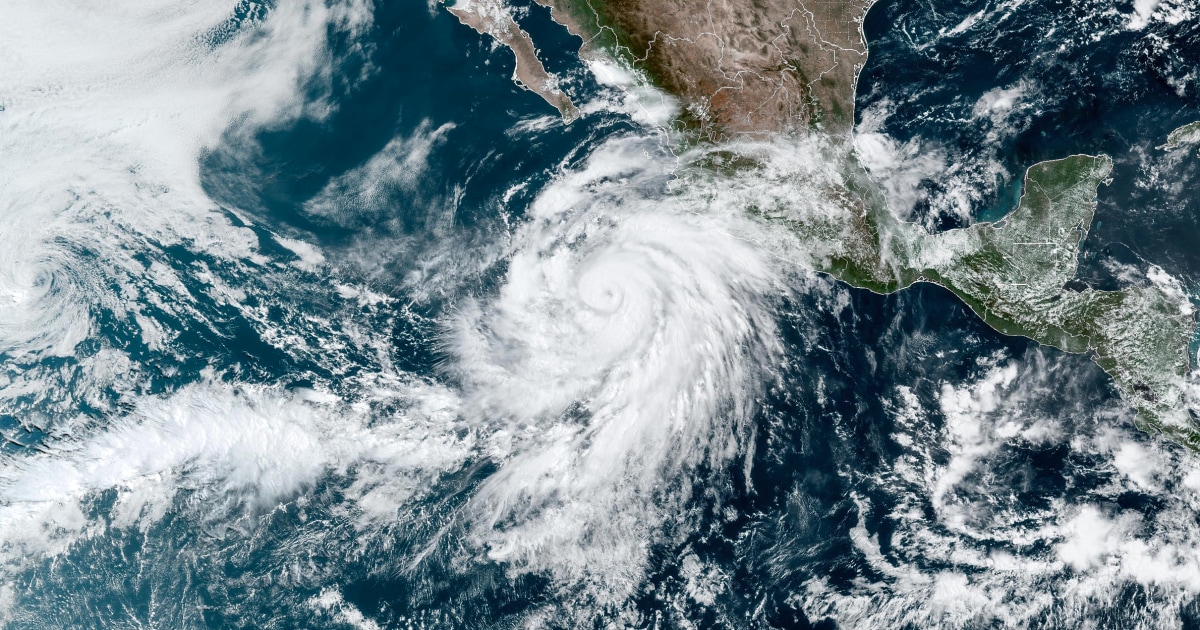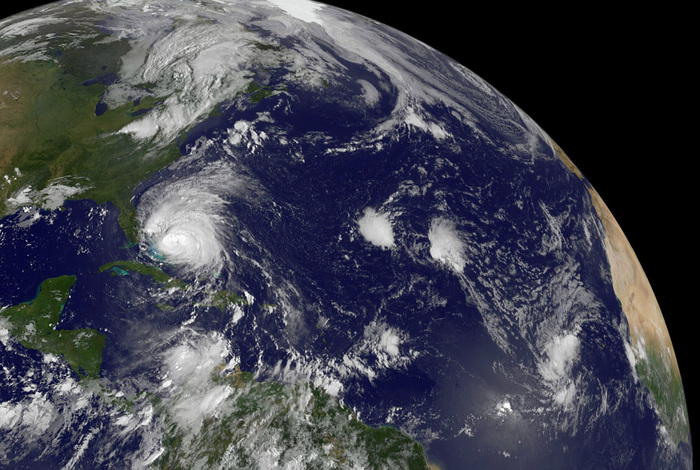guest Post
The hurricane "Dorian" had already inflated to the strongest cyclone level 5, when he hit the Bahamas with wind speeds of almost 300 kilometers per hour on Sunday. As the US National Hurricane Center announced, Dorian was on a par with the famed 1935 Labor Day hurricane, the harshest Atlantic hurricane ever hit land. Meanwhile, the storm has weakened a bit and now reaches the category 4.
It is the first time since systematic satellite recordings began that a storm of magnitude 5 will occur in the Atlantic Ocean for four consecutive years, according to Matthew 2016, Irma and Maria 2017 and Michael 2018. The recent record storms have fueled discussion among experts about whether a hurricane Category 6 should be introduced.
On Monday, here is an overview of the development of hurricanes Dorian, the emergence of storms in general and the prospects for the US appeared. Now I want to answer the question of what climate change is doing with the tropical storms. In principle, the calculation is simple: Decisive for their destructive power is the temperature of the seawater - because the heat of the water is their source of energy.
MIRROR ONLINE
That is why these monster storms occur in the tropics and there only in the warmer half of the year. If such a storm is not disturbed by shear winds or land in the way, it can reach a maximum strength, which is the higher, the warmer the sea water under it is. The sea temperatures are now known to increase worldwide by the global warming continuously.
Violent storms are even more powerful due to climate change
A full 93 percent of the additional heat captured by our greenhouse gases is stored in the oceans. Therefore, climate researchers have long expected that the warmer the climate, the stronger tropical storms become.
The US Ocean and Atmosphere Authority (NOAA) maintains a database (called IBTrACS) of all tropical storms worldwide, known as hurricanes, typhoons or cyclones, depending on the region. If you look at the trends there since 1980, it is noticeable that the storms of category four have increased by 60 percent and those of category 5 by more than 100 percent. The storms of the weak categories are becoming rarer. (see grafic). The total number of hurricanes has remained almost the same.
MIRROR ONLINE
Despite these data, it has long been controversial whether these trends are also reliable, as methods and quality of wind measurements have changed over time.
Meanwhile, however, the developments are so clear that there is broad agreement on their reality. This is shown by the most recent report by the expert team of the World Meteorological Organization WMO, which appeared this March. Ten of the eleven experts agreed that "the sum of evidence indicates that, on a global average, the intensity of the strongest tropical storms has increased noticeably since the early 1980s," as the jargon has put it. Eight of the eleven experts were also convinced that man contributed to this increase. Since the 1970s, satellite data, which show similar findings to wind measurements in the atmosphere, also help in the assessment.
Other features of tropical storms are also changing as a result of climate change - and not for the better. It has been proven that tropical storms are progressing more and more slowly - which means that they remain longer over a place - such as Houston. This leads to larger storm surges and rainfall. It may be that global warming slows the circulation of the tropical atmosphere, as climate models and metrics consistently show.
The wind is not the worst thing about a hurricane
In general, the wind of a hurricane is usually not the main problem. Because most of the damage is caused by the floods that it brings with it. On the one hand by the storm surges on the coast - as with Sandy in New York. These storm surges are increasing due to rising global sea levels as a result of man-made climate change.
Second, by extreme rain - as in Harvey, the record rainfall with far more than 1000 millimeters of rain in a few days, the city of Houston under water. The rising temperatures allow the air to absorb more water from the ocean and then rain. In the case of Harvey, it was calculated that global warming is likely to have increased rainfall by almost 40 percent - and increased the likelihood of such a flood sixfold.
NASA EARTH OBSERVATORY HANDOUT / EPA-EFE / REX
Fortunately, Europe does not count as hurricane. However, first data analyzes show that tropical storms are spreading further and further away through changes in temperature patterns. An obvious development, as the global warming of the oceans increases the areas where the minimum 26 degrees water temperature that a hurricane needs can be reached.
In October 2017, for the first time, a category 3 tropical storm off the Portuguese coast appeared: Ophelia. Luckily, unlike what he feared, he did not land there, but moved north, weakening over colder seawater before hitting Ireland as an extra-tropical autumn storm. It was the worst storm for half a century.
The future prospects will not look better if we do not stop global warming quickly. This concerns the second part of the report of the WMO expert team, which appeared in August. He predicts that storm tide levels, precipitation levels and storm intensities will continue to rise.








